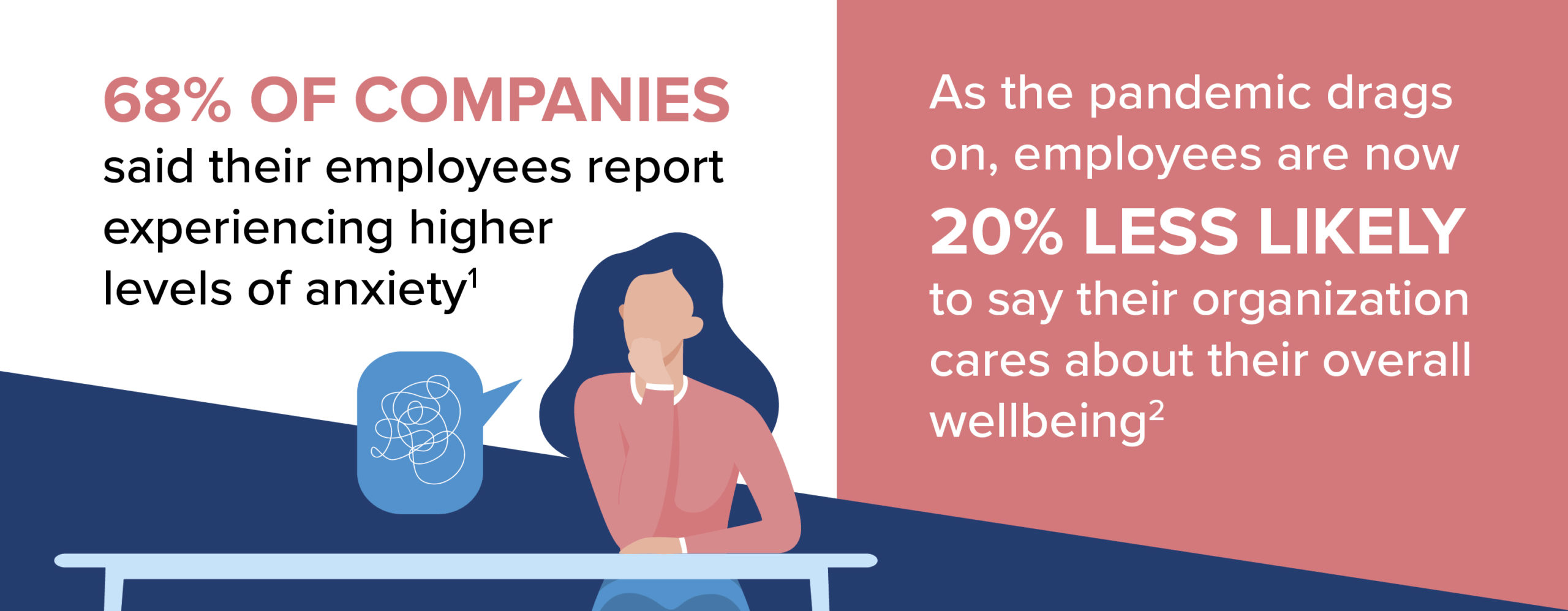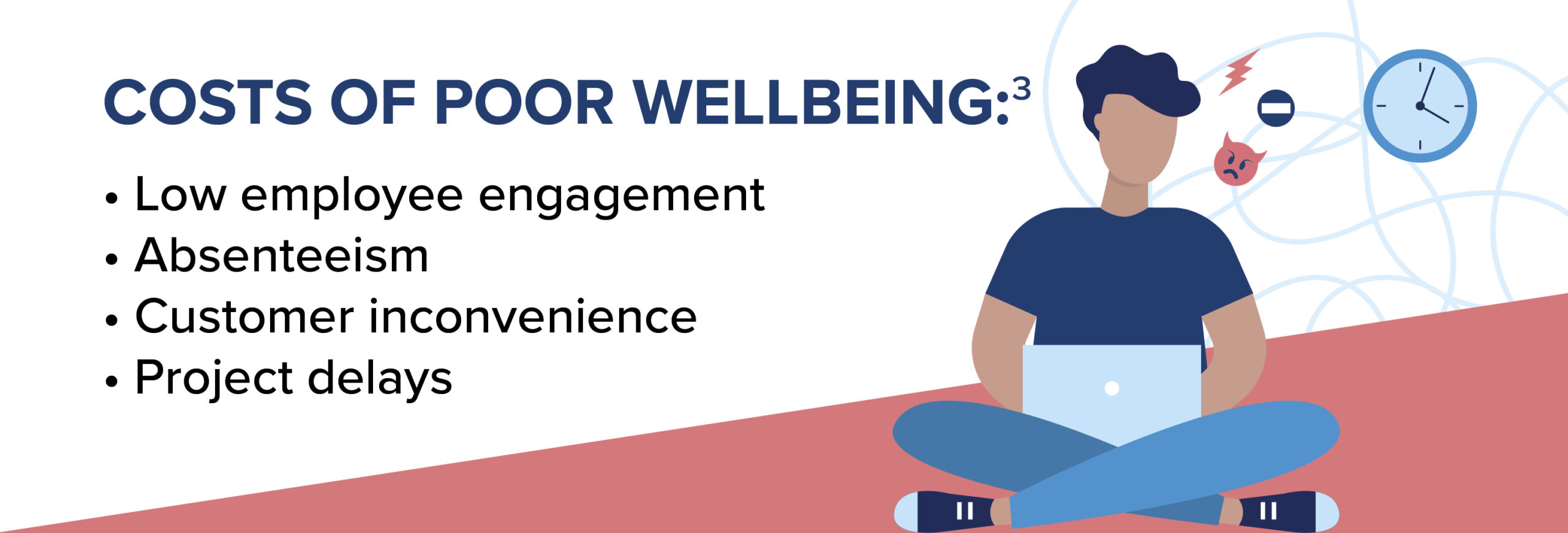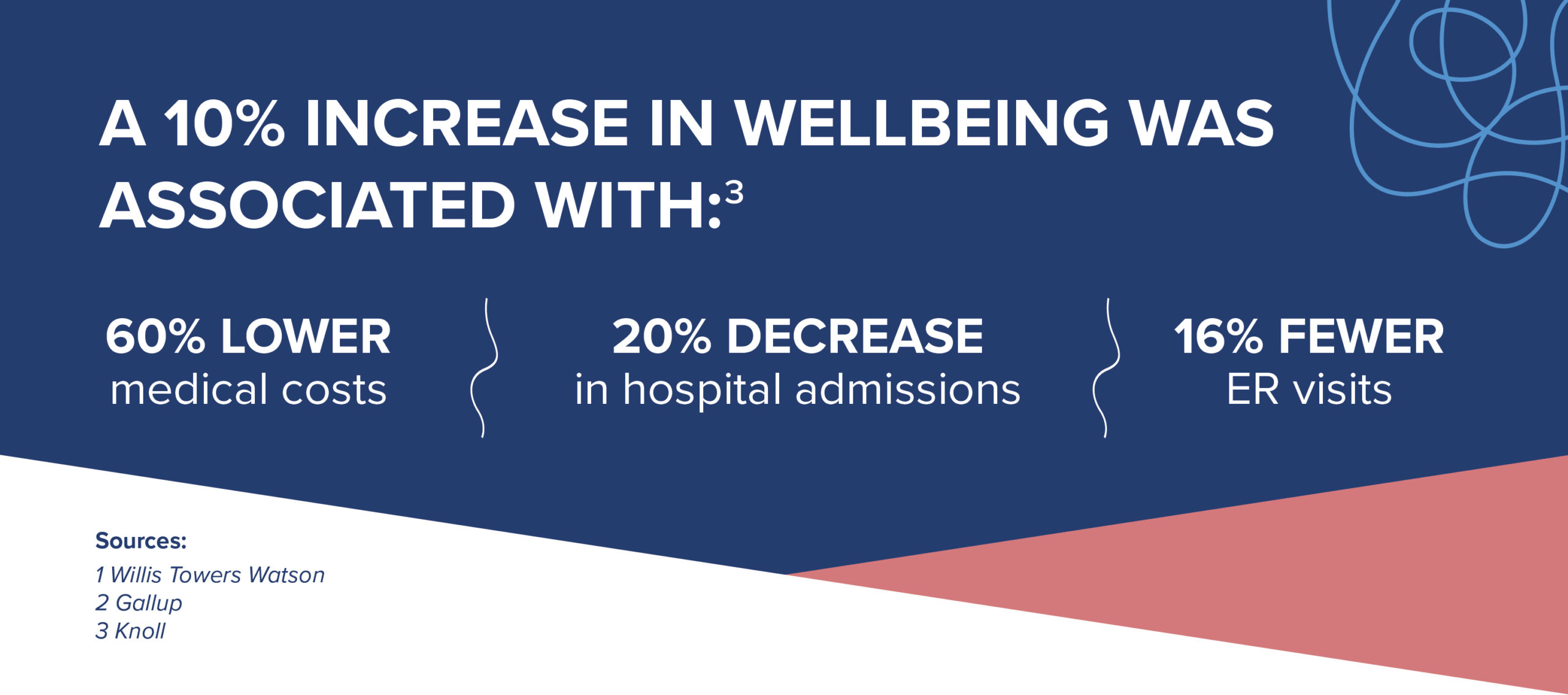
This increase in stress can cause catastrophic damage to all facets of a business. Low wellbeing in your workforce often results in higher rates of employees not showing up to work and low employee engagement, which can lead to project delays and customer disappointment in your services.

In contrast, a workforce with high wellbeing is more productive, uses fewer sick days, and saves enormous medical costs:

There are several ways you can raise wellbeing among your employees, although techniques will vary from company to company depending on differing needs and workplace cultures. When testing out ideas to understand what works best for your business, keep in mind the three main aspects of wellbeing: physical, social, and mental. Your employees should be physically healthy, feel socially engaged with their peers, and enjoy the work that they do. Investing in company-wide health initiatives, finding creative ways for coworkers to stay in touch, and checking in with employees to understand how well they are managing their work are all good places to start when measuring your workforce’s wellbeing.
Ignoring workplace wellbeing can cause serious and unnecessary damage to the quality of your company’s services. If you’re unable to invest in company-wide initiatives, remember that even small changes can have an effect (For example, encouraging employees to keep plants in their home office – a technique known as biophilic design – can help manage anxiety and stress among your workers). Any increase in wellbeing, no matter how small, will positively affect the work of your employees and your business.
Sources:

